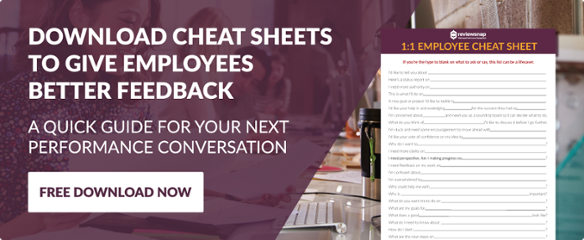7 Tips for Providing Effective Employee Feedback

Feedback is something that can make or break employee performance. In fact, not providing feedback can be detrimental. Employees are two times more likely to be disengaged if they feel like they are being ignored by their manager.
So, you can imagine how important it is to ensure you communicate and use this opportunity to cater to the development of your employees. It is your job to make sure that this feedback offers impact and makes a difference. How can you be sure to provide effective feedback such as this? The following tips and tricks will aid in this, so you can get started on developing your employees, and their performance, today!
Read More: 7 Benefits of Giving Gratitude to Your Employees
1. BE SPECIFIC, NOT GENERAL
When giving feedback it is best to be as precise as possible. Employees want to know what they did well, or what they need to work on. A recent study actually found that 65% of employees said they wanted MORE feedback.
Tweet This: 65% of employees said they want more feedback. Are you giving enough?
And, without details, they could easily be lead astray or unsure of what exactly they need to look out for next time. Let them know what specific behavior they need to continue (or work on changing), and enforce this behavior in the future. Instead of saying a simple, “good report,” explain what you liked about it and offer up any advice that you may deem fit.
2. FOCUS ON SPECIFIC BEHAVIOR
Be sure to state any feedback toward what the employee actually did, and not who they are as a person, or what their intentions may have been. This relates to pointing out things they can actually change. Whether it’s talking too much, or formatting a report in the wrong way, these are both examples of things a person can improve on. And, improving is the main goal of feedback. So talk, and offer up tools and guidance that they can take advantage of on their journey.
Tweet This: How to give feedback that actually improves employee performance:
3. BE SINCERE AND HONEST
When providing anyone with feedback, be sincere in how you approach them. No matter how good the feedback is, if presented in an apathetic or even angry tone, the communication can be instantly lost. Sadly, 44% of employees don’t think their boss is being honest during the feedback process.
Tweet This: Are you being sincere in your employee feedback delivery? Read this:
Show you have a true interest in the employee and that them receiving, and learning, from this feedback is important to you. You can also use this to create a back and forth conversation about the discussed behavior. Providing them with a bit of control can grant new insight and allow for better feedback in the future.
Learn More: The Importance of Employee Appraisals
4. GET THEIR THOUGHTS
Some employees make mistakes simply because they did not know a mistake was being made. After you offer your feedback, and explain what should have been done, take this time to also ask them what they feel needed to be done differently.
Do they see their mistake? Do they understand how it could have been avoided? Or, if dealing with positive feedback, what will they continue to do in the future to ensure continued good results? Aside from creating communication, this also gives you a view into what they are thinking and how they see the situation. This has the ability to help feedback in the future, and create a better understanding between you both.
5. BE CONSTRUCTIVE
When talking about a specific time or task when a mistake was made, be sure to provide the feedback as close to the event as possible. And, all information provided should be tied to this one event. Try not to go off on a tangent, that can wait until the very end, or perhaps be discussed at a better time. The most effective feedback is well timed, and allows the employee to be able to connect what is being said to the actions that took place.
Also, make sure that when thinking constructively you are not offering criticism instead. Being constructive centers around letting another person understand how they can improve, not bashing their work in any way. However, 48% of employees say that their company’s performance processes are weak in improving development. Take note of this, and be sure that improvement is a top priority.
6. GIVE RECOGNITION AND POSITIVE FEEDBACK
Providing Feedback isn’t just about what a person is doing wrong, you also need to look at what they have done right. Recognition is a very powerful motivator and encourages employees to continue great work while being more productive.
Actually, 78% of employees said that being recognized motivates them in their job, and 69% said they would even work harder if they felt their efforts were recognized. It’s no wonder then how this aids in improving their own work, but also the work of others around them and the company as a whole.
7. BE CONSISTENT
Feedback isn’t all about annual reviews anymore. Now we are seeing, the more feedback – the better. And, employees are wanting it too. Be as consistent as possible with your feedback, even if it’s something small. The littlest recognition, or push in the right direction can change the employee’s day for the better. This can then create a continued cycle of greatness within the workplace.
Read More: 20 Tips from the Pros to Make the Most of Employee Development Programs
Effective employee feedback is not one-size-fits-all. But, there are things you can do to make it a pleasant experience for everyone. The smallest gestures can make the biggest difference, and help someone on their path to becoming a great worker.
Do you want to take your employee performance management to the next level? ReviewSnap offers everything from 360-degree feedback to compensation tracking is bundled into one system, so it’s easier than ever to enhance communication and employee performance coaching. Sign up for your free trial today!
Recent Posts:

